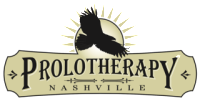What are the risks of Platelet Rich Plasma?
Fortunately, the risk/benefit ratio (potential of benefit versus the possibility of adverse events) for Platelet Rich Plasma is similar to Prolotherapy. While nothing is risk-free in medicine, both of these treatment options have an extremely low risk of adverse events. Platelet Rich Plasma per se has essentially no risk, since it is simply the patient’s own blood products concentrated, then given back to the patient. And the effect that is desired, triggering of connective tissue healing, is the most natural of body processes. There are rare occasions where PRP produces a ‘very enthusiastic’ triggering of the healing process, causing significant temporary symptom increases. Triggering of the connective tissue healing process produces some discomfort most of the time, as the chemicals released by the immune/healing system are irritating to the tissues, and particularly to the already-damaged nerve fibers in tissue that are already producing pain. So patients often feel some ‘uptick’ of symptoms in the first few days following treatment. But on rare occasions this becomes quite uncomfortable, and may prompt temporary administration of pain medication.
One of the risks of any ‘skin penetration’, by needle or surgery, is infection. One of the benefits of using Platelet Rich Plasma is that, in addition to triggering healing, it has been shown in research studies to be an outstanding antibiotic agent. While the risk of infection due to needle puncture is quite small, it would be expected that this risk would be further reduced if PRP is used.
